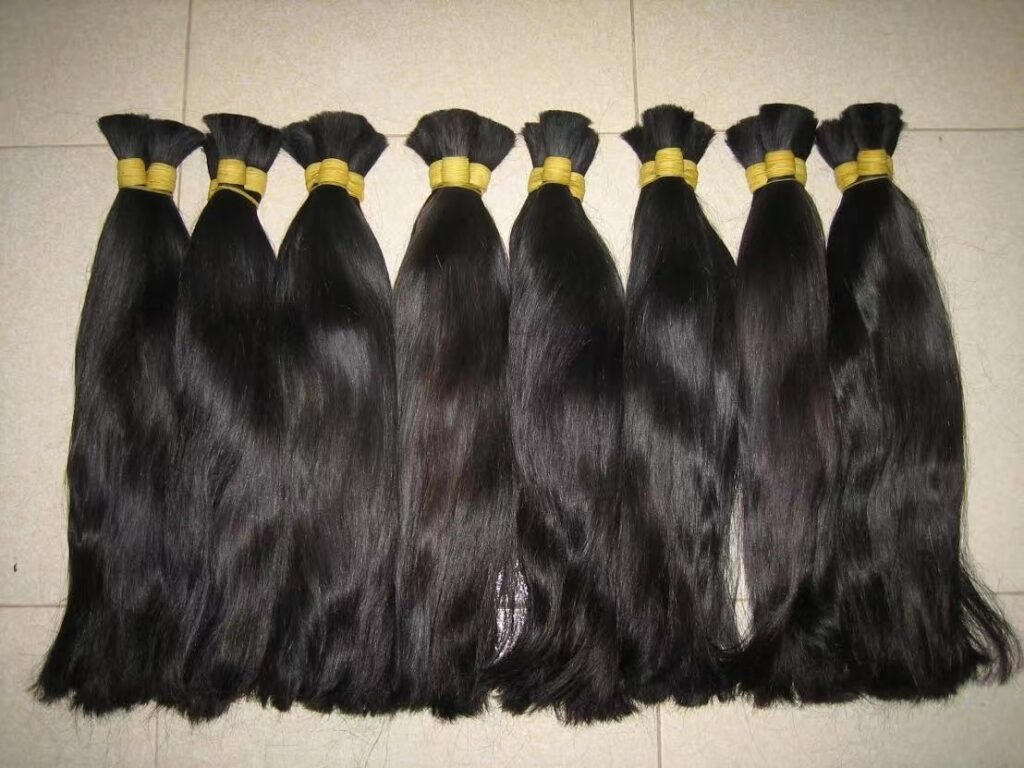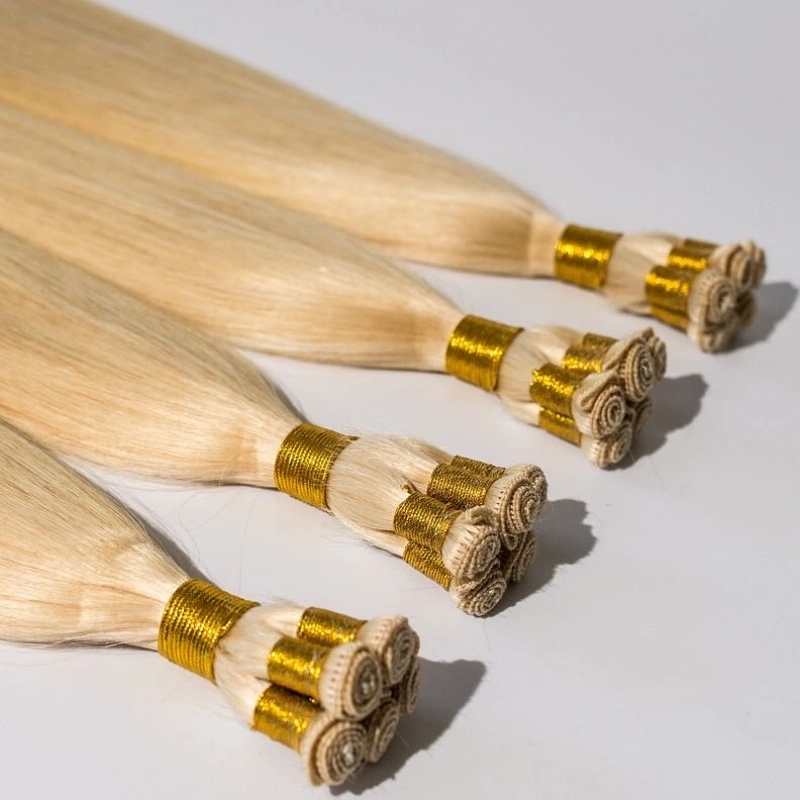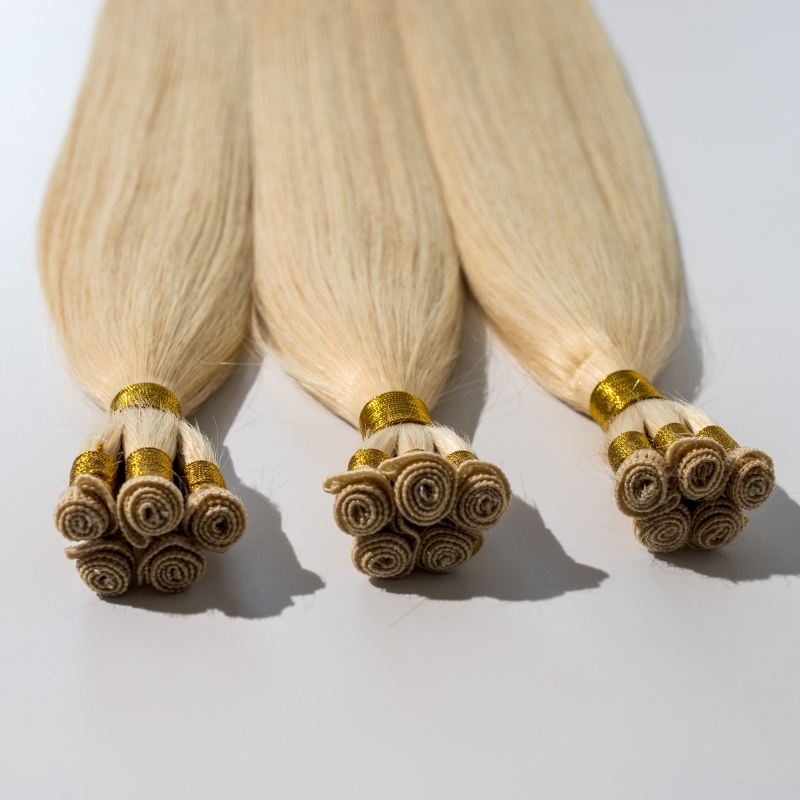Hand tied weft hair extensions are a popular and highly sought-after method of hair enhancement in the beauty and hair industry. These extensions are known for their natural appearance, comfort, and versatility. In this comprehensive guide, we will explore the intricacies of hand tied weft hair, including its history, production process, application methods, benefits, and maintenance.

Hair extensions have been used for centuries, dating back to ancient civilizations such as Egypt, where both men and women adorned themselves with wigs and extensions made from human hair, wool, and other materials. Over time, the techniques and materials used for hair extensions have evolved, leading to the sophisticated and diverse options available today.
Hand tied weft hair extensions are a relatively modern innovation in the history of hair enhancement. They emerged as a solution to the demand for more natural-looking and comfortable extensions that blend seamlessly with the wearer’s natural hair.
Hand tied weft hair refers to hair extensions that are meticulously crafted by hand. Unlike machine-made wefts, which are produced using industrial machines, hand tied wefts are created by skilled artisans who tie small sections of hair together using a fine, durable thread. This process results in a thinner, more flexible weft that lies flat against the scalp and provides a natural look and feel.

The production of hand tied weft hair involves several steps, each requiring precision and expertise:
Hand tied weft hair extensions come in various types, catering to different hair textures, lengths, and colors:

Hand tied weft hair extensions can be applied using various methods, depending on the desired result and the skill level of the stylist. The most common methods include:
In the beaded weft method, small silicone-lined beads are used to attach the wefts to the natural hair. The process involves the following steps:
The sew-in method, also known as the braidless sew-in, involves creating a base of natural hair to sew the wefts onto. The process includes:
In the adhesive method, a special tape or glue is used to attach the wefts to the natural hair. The process involves:
Hand tied weft hair extensions offer several advantages over other types of extensions:

One of the most significant benefits of hand tied weft hair is its natural appearance. The thin, flexible weft lies flat against the scalp, making it virtually undetectable. The wefts blend seamlessly with the natural hair, providing a natural look and feel.
Hand tied wefts are lightweight and comfortable to wear. Unlike some other types of extensions, they do not cause tension or discomfort on the scalp. The thin wefts also allow for better airflow, reducing the risk of scalp irritation.
Hand tied weft hair extensions are highly versatile and can be styled in various ways. They can be curled, straightened, and colored to achieve different looks. The extensions can also be worn in updos and ponytails without revealing the wefts.
Hand tied wefts are known for their durability. The hand-tied knots are secure and less likely to unravel compared to machine-made wefts. With proper care, hand tied weft hair extensions can last several months, making them a cost-effective option.
Hand tied wefts cause minimal damage to the natural hair. The application methods do not involve harsh chemicals or excessive heat, reducing the risk of damage to the natural hair. The lightweight wefts also minimize tension on the scalp.
Proper maintenance and care are essential to prolong the life of hand tied weft hair extensions and keep them looking their best. Here are some tips for maintaining and caring for hand tied weft hair:

Emeda Hair’s hand tied weft extensions stand out due to their superior quality, natural appearance, and comfortable wear. Crafted from 100% Remy human hair, these extensions ensure a smooth, tangle-free experience and can be styled in numerous ways to achieve the desired look. Emeda Hair excels in providing thin, flexible wefts that lie flat against the scalp, ensuring a seamless blend with natural hair and reducing scalp tension. With a commitment to excellence and customer satisfaction, Emeda Hair offers durable and versatile hair enhancement solutions that can last up to 12 months with proper care.

By choosing high-quality hand tied weft hair extensions and following proper care practices, individuals can enjoy beautiful, long-lasting hair enhancements that enhance their natural beauty. Whether seeking added volume, length, or a new look, hand tied weft hair extensions offer a reliable and stylish solution.
Hand tied weft hair is made by skilled artisans who tie small sections of hair onto a thin, durable thread, creating a thinner and more flexible weft that lies flat against the scalp. Machine-made weft hair, on the other hand, is produced using industrial machines, resulting in a thicker and less flexible weft.
With proper care and maintenance, hand tied weft hair extensions can last anywhere from 6 to 12 months. The longevity depends on factors such as the quality of the hair, the application method, and how well they are maintained.
Yes, hand tied weft hair extensions can be styled with heat tools such as curling irons, straighteners, and blow dryers. It is recommended to use a heat protectant spray and to keep the heat settings on low to medium to avoid damaging the extensions.
Wash hand tied weft hair extensions with a sulfate-free, gentle shampoo and conditioner. Detangle the hair before washing, wash in a downward motion to prevent tangling, and rinse thoroughly to remove all product residue. Avoid washing too frequently to prevent drying out the extensions.
Yes, hand tied weft hair extensions made from 100% Remy human hair can be colored to match your natural hair or to achieve a desired look, such as highlights, balayage, or ombre. It is best to have the coloring done by a professional stylist to ensure the best results.
Hand tied weft hair extensions are known for their comfort. They are lightweight and lie flat against the scalp, reducing tension and discomfort. Properly installed hand tied wefts should feel natural and comfortable to wear.
Regular maintenance appointments with your stylist are recommended every 6 to 8 weeks. During these appointments, the stylist will check the condition of the wefts, reapply them if necessary, and trim any split ends to keep the extensions looking healthy.
When properly applied and maintained, hand tied weft hair extensions cause minimal damage to natural hair. The application methods do not involve harsh chemicals or excessive heat, reducing the risk of damage. It is important to follow proper care instructions and avoid styles that put excessive tension on the wefts.
Yes, you can swim and exercise with hand tied weft hair extensions, but it is important to take precautions. Before swimming, wet your hair and apply a leave-in conditioner to minimize damage from chlorine or saltwater. After swimming or exercising, rinse the hair thoroughly and detangle it gently.
The number of wefts needed for a full head of extensions depends on the desired volume and length. On average, 4 to 6 wefts are required for a full head. Your stylist can assess your natural hair and recommend the appropriate number of wefts for your desired look.
Yes, you can sleep with hand tied weft hair extensions. To protect the extensions while sleeping, braid the hair or tie it in a loose bun, and use a silk or satin pillowcase to reduce friction and prevent tangling. Avoid sleeping with wet hair, as this can cause the wefts to tangle and mat.
To detangle hand tied weft hair extensions, use a wide-tooth comb or a brush specifically designed for extensions. Start from the ends and work your way up to the roots, gently removing any tangles without pulling or breaking the hair. Detangling the hair before washing and before going to bed helps prevent knots and tangles.
Hand tied weft hair extensions should be removed by a professional stylist to avoid damaging your natural hair. The stylist will carefully cut the thread or remove the beads used to attach the wefts, ensuring that the natural hair is not pulled or damaged in the process.
Yes, hand tied weft hair extensions can be reused if they are in good condition. Proper maintenance and care will help extend the lifespan of the extensions, allowing you to reuse them for multiple installations. The stylist can reapply the wefts using a fresh set of beads or thread.
Hand tied weft hair extensions are suitable for most hair types, including fine, medium, and thick hair. However, individuals with very thin or delicate hair should consult with a professional stylist to determine the best type of extensions for their hair type and to ensure that the extensions are applied in a way that minimizes damage.
New customization and stock clearance
WhatsApp us